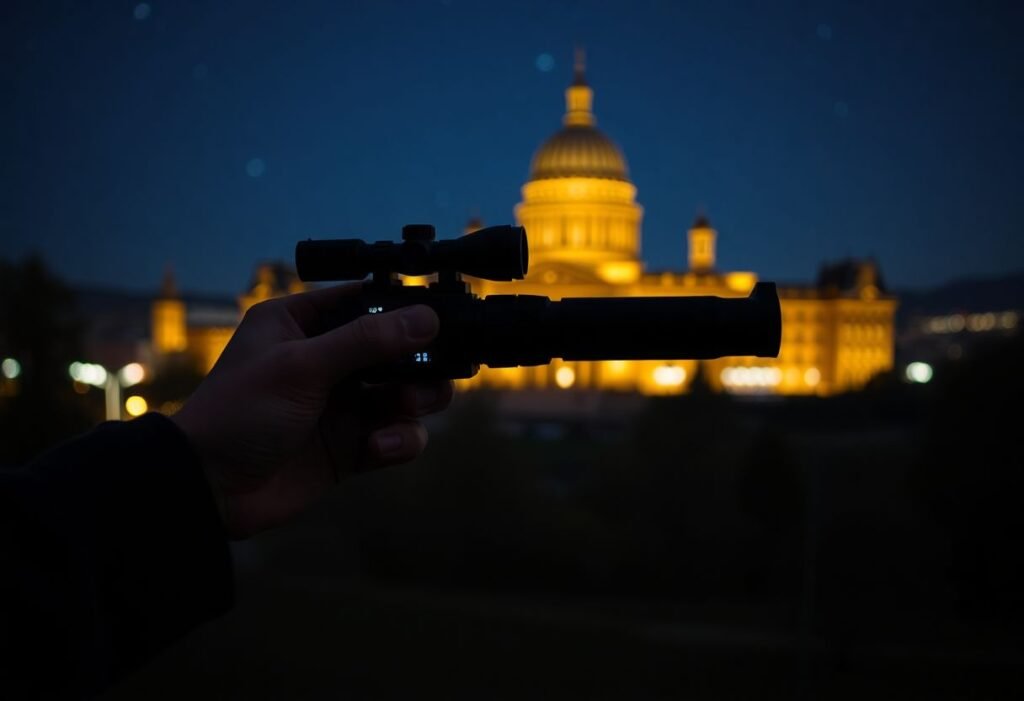A groundbreaking innovation in the realm of night vision technology has emerged from the University of Michigan. Researchers have developed a new type of OLED that is not only thinner than paper but also capable of converting darkness into usable night vision. This advancement highlights the potential of leveraging existing OLED manufacturing processes and off-the-shelf components to create efficient solutions for low-light visibility.
Revolutionizing Night Vision Technology
The advent of this new OLED film represents a significant leap forward in night vision technology. Traditional night vision devices often rely on bulky and heavy equipment that can be cumbersome in the field. In contrast, this OLED film offers a lightweight and compact alternative, enabling users to experience improved visibility without the added weight of conventional devices. By employing standard manufacturing processes, researchers ensure that this innovation can be scaled and adopted widely.
Unveiling the Science Behind OLED
At the core of this technology is the use of Organic Light Emitting Diodes (OLEDs). These diodes utilize organic compounds that emit light when an electric current is applied, allowing for vibrant images and enhanced visibility in low-light conditions. The University of Michigan team has taken this well-established technology and optimized it for night vision applications. With an emphasis on staying cost-effective, this new film offers a promising solution for various sectors, from military to recreational use.
Applications of Thinner OLED Night Vision
The potential applications for this innovative OLED night vision film are vast. In the military, lightweight night vision capabilities can significantly enhance operational effectiveness, enabling soldiers to navigate and assess environments more efficiently. Similarly, in law enforcement and search and rescue operations, this technology could provide critical advantages in low-light conditions. Moreover, consumers interested in outdoor activities, such as hiking or camping, can benefit from affordable, portable night vision solutions, making this technology widely accessible.
Environmental Impact and Energy Efficiency
One of the key advantages of this OLED night vision film is its energy efficiency. By utilizing existing OLED technology, the film consumes less power compared to traditional night vision devices, which require extensive batteries and high power inputs. This reduced energy consumption not only decreases operating costs but also minimizes the environmental footprint associated with high-energy technologies. Thus, this innovation aligns with the growing demand for sustainable and responsible technological solutions.
Future Prospects of OLED Innovations
The development of this OLED night vision film opens the door to further innovations within the OLED field. As research continues, scientists are optimistic about enhancing the performance and capabilities of OLED technology, potentially leading to even thinner films and improved image quality. The future of night vision may very well depend on these advancements, paving the way for groundbreaking applications that were once only imagined.
Conclusion: A New Era in Night Vision
This new OLED technology signifies a major milestone in night vision capabilities. By combining cutting-edge research with practical manufacturing, the University of Michigan’s team has created a lightweight, efficient solution that could redefine low-light visibility and expand its applications across numerous fields. As this technology gains traction, it could lead to significant improvements in safety, efficiency, and accessibility for users worldwide.
Disclaimer: This article is for informational purposes only and does not constitute professional advice on the utilization of night vision technologies.





















